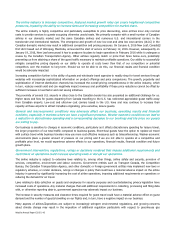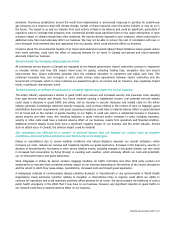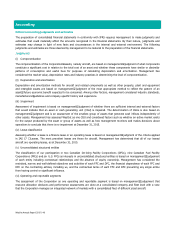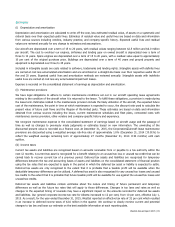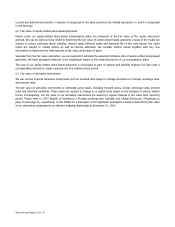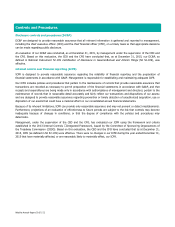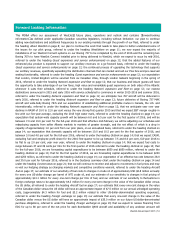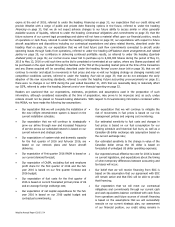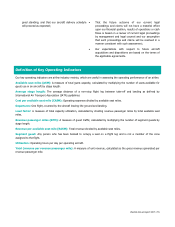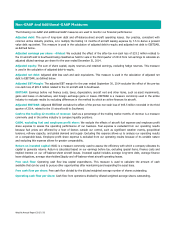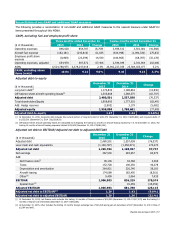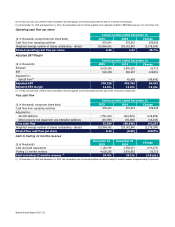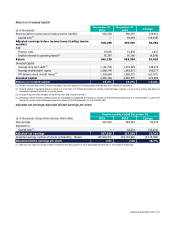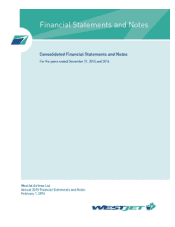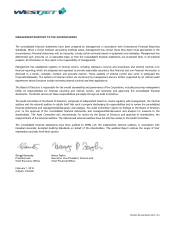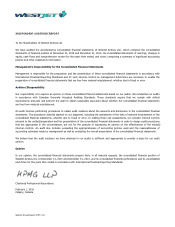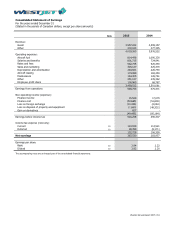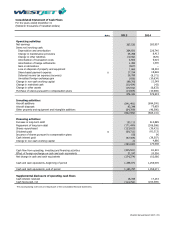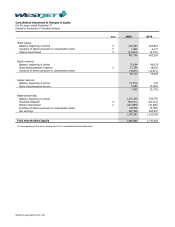Westjet 2015 Annual Report Download - page 58
Download and view the complete annual report
Please find page 58 of the 2015 Westjet annual report below. You can navigate through the pages in the report by either clicking on the pages listed below, or by using the keyword search tool below to find specific information within the annual report.
WestJet Annual Report 2015 | 56
Non-GAAP and Additional-GAAP Measures
The following non-GAAP and additional GAAP measures are used to monitor our financial performance:
Adjusted debt: The sum of long-term debt and off-balance-sheet aircraft operating leases. Our practice, consistent with
common airline industry practice, is to multiply the trailing 12 months of aircraft leasing expense by 7.5 to derive a present
value debt equivalent. This measure is used in the calculation of adjusted debt-to-equity and adjusted net debt to EBITDAR,
as defined below.
Adjusted earnings per share - diluted: We excluded the effect of the after-tax non-cash loss of $33.2 million related to
the 10 aircraft sold to Southwest being classified as held for sale in the third quarter of 2014 from net earnings to calculate an
adjusted diluted earnings per share for the year ended December 31, 2014.
Adjusted equity: The sum of share capital, equity reserves and retained earnings, excluding hedge reserves. This measure
is used in the calculation of adjusted debt-to-equity.
Adjusted net debt: Adjusted debt less cash and cash equivalents. This measure is used in the calculation of adjusted net
debt to EBITDAR, as defined below.
Adjusted EBT Margin: The adjusted EBT margin for the year ended September 30, 2014 excludes the effect of the pre-tax
non-cash loss of $45.5 million related to the 10 aircraft sold to Southwest.
EBITDAR: Earnings before net finance costs, taxes, depreciation, aircraft rent and other items, such as asset impairments,
gains and losses on derivatives, and foreign exchange gains or losses. EBITDAR is a measure commonly used in the airline
industry to evaluate results by excluding differences in the method by which an airline finances its aircraft.
Adjusted EBITDAR: Adjusted EBITDAR excludes the effect of the pre-tax non-cash loss of $45.5 million recorded in the third
quarter of 2014, related to the 10 aircraft sold to Southwest.
Cash to the trailing 12 months of revenue: Cash as a percentage of the trailing twelve months of revenue is a measure
commonly used in the airline industry to compare liquidity positions.
CASM, excluding fuel and employee profit share: We exclude the effects of aircraft fuel expense and employee profit
share expense to assess the operating performance of our business. Fuel expense is excluded from our operating results
because fuel prices are affected by a host of factors outside our control, such as significant weather events, geopolitical
tensions, refinery capacity, and global demand and supply. Excluding this expense allows us to analyze our operating results
on a comparable basis. Employee profit share expense is excluded from our operating results because of its variable nature
and excluding this expense allows for greater comparability.
Return on invested capital: ROIC is a measure commonly used to assess the efficiency with which a company allocates its
capital to generate returns. Return is calculated based on our earnings before tax, excluding special items, finance costs and
implied interest on our off-balance-sheet aircraft leases. Invested capital includes average long-term debt, average finance
lease obligations, average shareholders’ equity and off-balance-sheet aircraft operating leases.
Free cash flow: Operating cash flow less capital expenditures. This measure is used to calculate the amount of cash
available that can be used to pursue other opportunities after maintaining and expanding the asset base.
Free cash flow per share: Free cash flow divided by the diluted weighted average number of shares outstanding.
Operating cash flow per share: Cash flow from operations divided by diluted weighted average shares outstanding.


